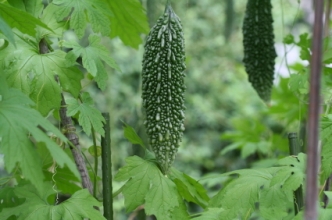University of Massachusetts.; Rutgers University. Cooperative Research and Extension Service.
Provides crop profiles, by crop name and country, of vegetables, herb and selected fruit crops popular with immigrant populations in the Northeastern United States. Focuses on sustainable production and marketing practices.

 Spicy, bitter or hot: new flavors are offered by ethnic varieties. Find information about those fruits and vegetables customarily valued by people with common racial, national, tribal, religious, linguistic or cultural origin or background.
Spicy, bitter or hot: new flavors are offered by ethnic varieties. Find information about those fruits and vegetables customarily valued by people with common racial, national, tribal, religious, linguistic or cultural origin or background.